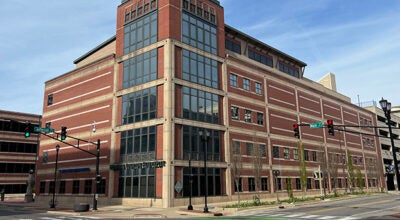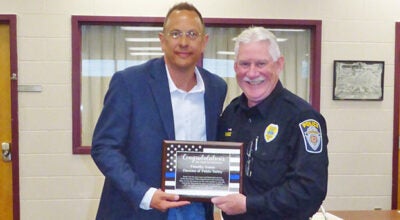Round Oak exhibited at world’s fair
Published 10:45 pm Wednesday, October 13, 2010
By JOHN EBY
Dowagiac Daily News
Dowagiac was represented at the 1893 Columbian Exposition in Chicago for the 400th anniversary of Christopher Columbus’ discovery of America.
Dowagiac’s Round Oak Stove exhibited at the opulent exodus of the Gilded Age during a transitional time.
October’s discussion at Sacred Heart of Mary Catholic Church, Leach Road, Silver Creek Township, Wednesday night centered on the book “The Devil in the White City” by Erik Larson.
This national bestseller detailed the building and operation of the Chicago World’s Fair of 1893 and the tale of Herman Webster Mudgett (i.e. H. H. Holmes) serial killer of the time.
Larson’s book details the efforts of Chicago and a group of city planners to build the 1893 World’s Fair and to outperform the French with their Paris World’s Fair and Eiffel Tower, including the first Ferris wheel.
The World’s Fair is contrasted with the parallel actions of a deadly serial killer who resides near the World’s Fair location on Chicago’s lakefront.
Mike Petersen of Dowagiac passed around a spoon-sized commemorative Round Oak shovel from the event and some postcards, which were just coming into vogue.
The fair, styled after the canals of Venice, Italy, covered 633 acres of Jackson Park from May 1, when it was opened by President Grover Cleveland, to October, 1893.
Guests arrived in one of three ways — through the street entrance on the Midway (now the University of Chicago), on the Lake Michigan pier to the east or the huge railroad terminus to the southwest.
Many workers who built the spectacle couldn’t afford the 50 cents charged for admittance.
About 20 people attended the program from Dowagiac, Sister Lakes, Niles, St. Joseph and Bangor.
For a flavor of the undertaking, they augmented discussion of the book led by Howard Poole with a viewing of the DVD “chapter” on Building the Fair from “Magic of the White City Expo” narrated by Gene Wilder.
“Vast” is a word often invoked to describe the fair, with a power plant of 43 steam engines and 127 dynamos providing electricity.
Forty-three states and 23 foreign countries contributed buildings.
By October, attendance reached 6.8 million paid visitors — doubling August’s 3.5 million.
Chicago Day Oct. 9 alone saw 716,881 fairgoers enter the White City.
Concession stands brought in more than $4 million. The fair made $1 million to return to 30,000 stockholders. The World’s Columbian Exposition became the standard by which future fairs were measured.
Consumer products debuted in Chicago include Juicy Fruit gum, Cream of Wheat, Shredded Wheat, Pabst Beer and Aunt Jemima syrup.
Thanks to emphasis on exhibits and education, public science and art museums can be found in every U.S. population center.
The fairground took shape on swampland where builders created foundations by driving “forests” of wood pilings into the mud. A mile and a half of beach were paved and a 1,500-foot pier extended into Lake Michigan.
Construction began in 1891 and consumed 18 months working around the clock.
Truly remarkable were techniques developed to create short-lived temples, such as stucco that combined plaster, cement and fiber — tough enough, but temporary compared to the appearance of “shimmering marble.”
Spray painting was invented to speed up the laborious chore with brushes.
Spectators paid 25 cents just to watch the massive construction take shape.
So overwhelming was the smorgasbord for the senses, most visitors started by “gawking at the size of the buildings surrounding the Grand Basin … All around the basin were the buildings that looked like Roman temples … The Court of Honor was the embodiment of America moving beyond the Yankee agrarian republic. It was now a great civilization, equal or better to Greece, Rome and Europe … It looked like Vatican Square on Lake Michigan.”
The fair gave the United States a new holiday, Columbus Day, and a new method of cultivating patriotism in schoolchildren — the Pledge of Allegiance.
The White City inspired the Emerald City. Children’s writer L. Frank Baum never forgot the fair and wrote “The Wizard of Oz” with it in mind.
Marching bands frequently performed John Philip Sousa marches. Dvorak composed the “New World Symphony” in the Exposition’s honor. A young piano player who worked at the fair, Scott Joplin, developed ragtime music.






